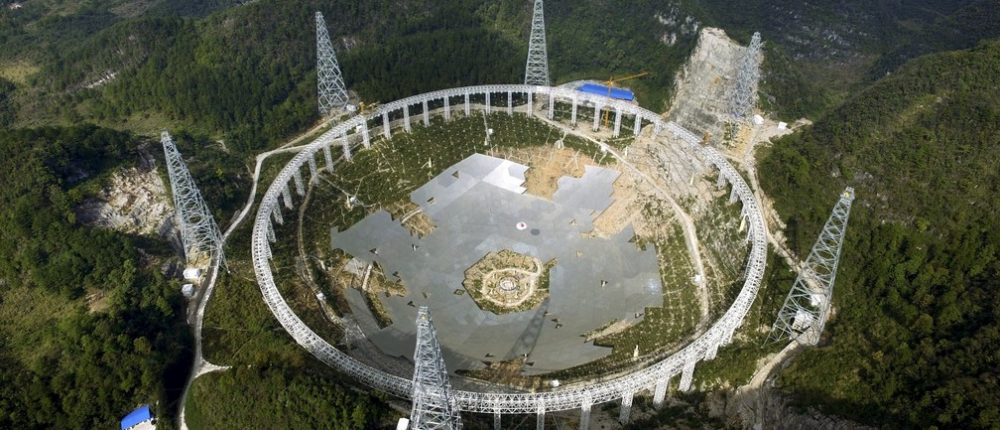The future of the built environment in a revolutionary age
Business leaders operating in construction and the built environment face huge challenges and opportunities in the years ahead. A number of major changes are coming together to create a completely new scenario. Some will see risks, others the immense opportunities to develop sustainable and profitable business models in the future.
One of the changes, the central theme of the World Economic Forum’s annual summit in Davos in 2017, is the impact of the 'fourth industrial revolution'. As a result of greater technological advances, we are about to see the physical world become ever more connected to the digital one through billions of sensors feeding back information, known as the Internet of Things. It will create new ways of serving customers, new capabilities in production and the operation of devices across all sectors.
Indeed, Professor Klaus Schwab, Founder and Executive Chairman of the World Economic Forum, wrote in an article for Foreign Affairs:
“An underlying theme in my conversations with global CEOs and senior business executives is that the acceleration of innovation and the velocity of disruption are hard to comprehend or anticipate and that these drivers constitute a source of constant surprise, even for the best connected and most well informed.”
This may be daunting, but it is also immensely exciting for business leaders to craft new commercial opportunities as they begin to understand the tools the fourth industrial revolution is delivering.
The other major shift is environmental and social: it is about the constraints of the planet to sustain an ever growing world economy serving a growing population, expected to reach nine billion by mid-century.
As the middle classes increase with up to three billion over the next few decades – the pressure on manufacturers to supply the goods and services they want will put untold strains on the planet’s non-renewable resources. Alongside that, of course, is the immediate challenge of reducing carbon emissions to keep global warming below two degrees, as agreed at the recent UN climate change summit in Paris.
It is also vital that businesses develop ways to make goods that consist of healthy materials, ensuring they contribute to health and wellbeing in the increasingly populated built environment. For example, ensuring good indoor air quality is a major issue today, especially as around 90% of our time is spent indoors. Businesses also need to consider how to develop goods for second and third life cycles, so that materials are used more effectively.
The concept of the circular economy and 'Cradle to Cradle' principles pulls these various threads together and provides a powerful tool for organisations to shift to truly sustainable business models. Circular ideas are currently being developed to good effect in the industry, such as DSM that already sells a number of safer materials, such as halogen-free cable coatings for electronics and solvent-free ingredients for paints that do not impose a burden on our ecosystem.
Another big shift is the rapid growth of the world’s ageing population. The number of people aged 60 or over went up threefold from 205 million in 1950 to 606 million in 2000. Another threefold increase is expected in the first half of this century with just under 2 billion 60-plus people expected by 2050.
All those involved in the built environment are considering how smart designs and the use of the Internet of Things can improve the lives and health and wellbeing of people as they age. Here the Financial Times visualises what may become the norm:
“Imagine a home where hidden sensors in the drugs cabinet can update prescriptions, the radiator will switch itself on when the weather turns chilly, and a bracelet can call the ambulance if an elderly person’s pacemaker plays up.”
At Tarkett, our designers have created intelligent, connected flooring, enabling caregivers to detect abnormal situations or unusual behaviours in senior citizens or residents of healthcare facilities. These innovations, underpinned by emerging technology, will enable us to provide added value services that support health and wellbeing.
Another innovative example of what adding connected technology to products can do is featured in Wired magazine. One expert offered an example of what adding sensors to the concrete in a bridge can do:
“When we rebuild bridges, we can use smart cement: cement equipped with sensors to monitor stresses, cracks, and warpages. This is cement that alerts us to fix problems before they cause a catastrophe.”
The exact future is of course unknown but it will certainly be full of exciting possibilities. How well we manage this new revolutionary phase will depend on our determination to drive a positive agenda in business, based on a strong purpose, balancing profits with people and planet.
Written by Remco Teulings, President, Tarkett EMEA
This article was also published on the Future of Construction Knowledge Sharing Platform and the WEF Agenda Blog.
--Future of Construction 14:56, 16 Jun 2017 (BST)
[edit] Related articles on Designing Buildings
- Are we doing the right thing? Shaping well-being into the future of our urban communities.
- Changing lifestyles in the built environment.
- Fourth industrial revolution.
- Innovation in engineering and construction, a sleeping sector awakens in Davos
- Is disruptive innovation possible in the construction industry?
- This is how cities can fight climate change.
- Top 4 challenges facing the construction industry.
- Unprecedented innovation and new technologies on the horizon.
- What is the future of the construction industry?
- What we know about wellbeing.
- Workplace as a Service WaaS.
Featured articles and news
Professional practical experience for Architects in training
The long process to transform the nature of education and professional practical experience in the Architecture profession following recent reports.
A people-first approach to retrofit
Moving away from the destructive paradigm of fabric-first.
International Electrician Day, 10 June 2025
Celebrating the role of electrical engineers from André-Marie Amperè, today and for the future.
New guide for clients launched at Houses of Parliament
'There has never been a more important time for clients to step up and ...ask the right questions'
The impact of recycled slate tiles
Innovation across the decades.
EPC changes for existing buildings
Changes and their context as the new RdSAP methodology comes into use from 15 June.
Skills England publishes Sector skills needs assessments
Priority areas relating to the built environment highlighted and described in brief.
BSRIA HVAC Market Watch - May 2025 Edition
Heat Pump Market Outlook: Policy, Performance & Refrigerant Trends for 2025–2028.
Committing to EDI in construction with CIOB
Built Environment professional bodies deepen commitment to EDI with two new signatories: CIAT and CICES.
Government Grenfell progress report at a glance
Line by line recomendation overview, with links to more details.
An engaging and lively review of his professional life.
Sustainable heating for listed buildings
A problem that needs to be approached intelligently.
50th Golden anniversary ECA Edmundson apprentice award
Deadline for entries has been extended to Friday 27 June, so don't miss out!
CIAT at the London Festival of Architecture
Designing for Everyone: Breaking Barriers in Inclusive Architecture.
Mixed reactions to apprenticeship and skills reform 2025
A 'welcome shift' for some and a 'backwards step' for others.
























Comments
See
== The future of the built environment
Report: Connected BIM for Building Design ==
https://www.autodesk.co.uk/solutions/bim/discover-building-design/bim-for-building-design?mktvar002=1094962&utm_medium=social-pd&utm_source=linkedin&utm_campaign=emea-aec-bim-building-core-investigate-experience&utm_id=1094962